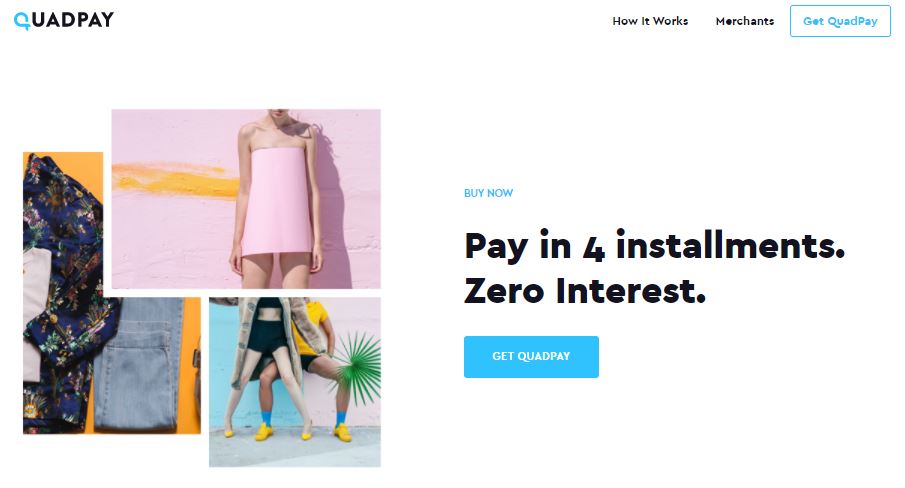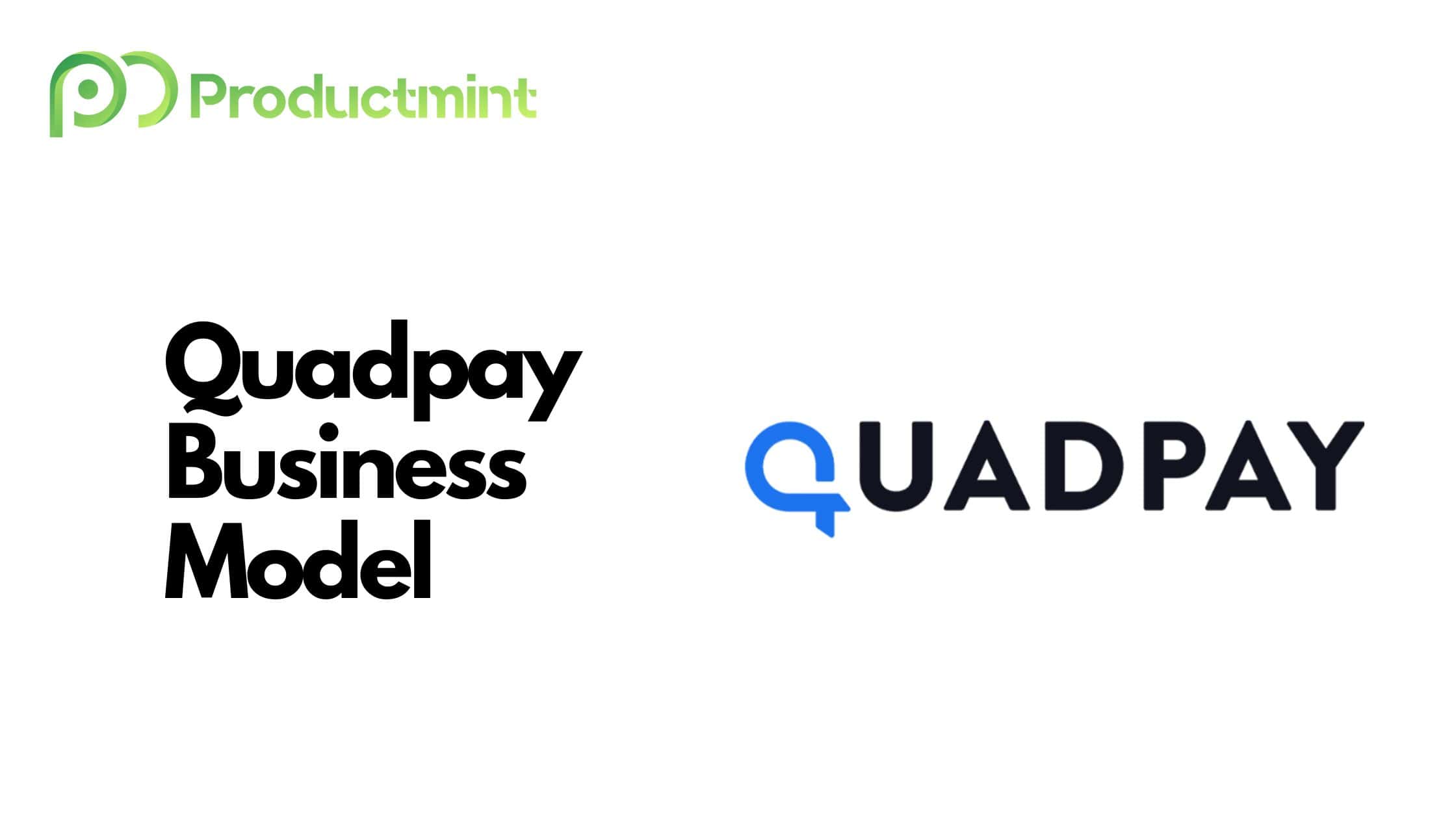Executive Summary:
Quadpay is a ‘Buy Now, Pay Later’ (BNPL) service that allows shoppers to pay over the course of four interest-free installments. The company works together with over 10,000 merchants.
Quadpay makes money via merchant fees, late payment fees, convenience fees, as well as interchange.
Founded in 2017, Quadpay has grown to become one of the leading BNPL providers in the United States. In June 2020, the firm was acquired by Zip for $269 million.
What Is Quadpay?
Quadpay is a FinTech company that offers ‘Buy Now, Pay Later’ services to online shoppers. Customers can pay for their items over the course of four installments.
The company works together with some of the world’s biggest online and offline retailers, including ASOS, Apple, Forever 21, Lululemon, Nike, Poshmark, VANS, Walmart, and thousands more.
Using the platform is extremely simple. First, shoppers sign up for the service. Quadpay runs a soft credit check and verifies the user’s identity (one must be 18 years of age and live in the US to access the service).
After the registration process is finalized, users can get ahead and start their shopping. Items can be bought at the partner’s store or directly via Quadpay’s browser extension, website, or mobile app (available on Android and iOS devices).
When ordering via the partner store, shoppers simply select Quadpay as their preferred payment method.
Alternatively, shoppers have the option to apply for a Quadpay-branded Visa card to conduct their payments.
Purchases are then paid via four interest-free installments. Quadpay does not charge any interest nor additional fees (as long as the items are paid on time).
If a shopper is late on a payment, then Quadpay will block him or her from making additional purchases via its platform until the outstanding sum is settled.
How Quadpay Started: Company History
Quadpay, headquartered in New York City, was founded in 2017 by Adam Ezra and Brad Lindenberg. Both founders act as the firm’s co-CEO.
Ezra was gaining plenty of valuable experience in the finance world prior to launching Quadpay. He, for instance, served as an executive at financial services firm Macquarie Group and later worked for Lachlan Murdoch’s (CEO of Fox Corporation and Rupert Murdoch’s son) family office.
Lindenberg, on the other end, already got his feet wet as a founder of various tech startups. His first successful exit was Lind Golf, a website that sold golf equipment online. The business was acquired by OO.com.au).
Soon after, he launched CalReply, a tool that sends out reminders about upcoming shows and other noteworthy content. In 2017, he sold the business to New York based Rokt where he went on to serve as the firm’s Chief Strategy Officer.
As Australian citizen, Ezra and Lindenberg both had themselves a first-row seat into the rise of BNPL services. Sydney-based Afterpay began dominating their home turf while companies like Klarna had already established themselves across the European peninsula.
Meanwhile, the US market was still in its infancy. Klarna expanded into the US back in 2015 and other local startups like Affirm or Splitit were just picking up steam. Yet, there was still plenty of market share to be had for fresh upstarts.
Ezra and Lindenberg, therefore, decided to team up and launch a solution of their own. After working on it for over a year (Lindenberg, for instance, was still working at Rokt), the team launched Quadpay out of beta in April 2018.

Naturally, the founders focused on what’s most important in the BNPL industry: sign up as many merchants as possible. In October 2019, the team introduced its debit card in cooperation with Visa, expanding the options with which shoppers can pay.
Nevertheless, many of its competitors were much better capitalized, making it tough to grow the business. Quadpay, therefore, decided to sell itself to Australian BNPL provider Zip Co. Limited.
The deal valued Quadpay at $269 million and was fully paid in Zip shares. Consequently, Quadpay shareholders were granted a 23.3 percent stake in Zip.
2020, in particular, was a very positive year for the company. Stay-at-home orders due to the novel coronavirus prompted many people to order online more often. Consequently, merchants were basically forced to accommodate the influx of new customers with a variety of different payment options.
As a result, Quadpay was able to onboard a lot of high-profile merchant partners, including GameStop, Nike, and others.
The exponential growth, furthermore, allowed Quadpay to snap up other businesses. In November 2020, it bought The Urge, a fashion-related search engine allowing users to find products based on images, for $6.1 million.
In 2020 alone, Quadpay was able to grow its business by over 200 percent. In an effort to differentiate itself from the growing competition (PayPal, for instance, launched its very own BNPL service in late 2020), Quadpay became the first company to offer a Chrome extension to allow shoppers to pay in instalments.
Despite the firm’s tremendous growth, owner Zip announced in July 2021 that it would get rid of the Quadpay name and rebrand it into Zip. The brand change was implemented a month later in August.
How Does Quadpay Make Money?
Quadpay makes money via merchant fees, late payment fees, convenience fees, as well as interchange fees.
Let’s take a closer look at each of these revenue streams in the section below.
Merchant Fee
Most of the revenue that Quadpay generates comes from the merchant fees that it collects for providing its payment solution.
Quadpay does not publicize its fee structure. Competing services like Affirm or Sezzle charge between three to six percent (plus fixed transaction fees of $0.30).
Quadpay may charge slightly below that number to entice merchant partners to join its payment service.
From the merchant’s perspective, there are a few reasons why they would offer BNPL payment options on their platforms.
First, Quadpay takes on the risk of payment default. Merchants partnering with Quadpay receive their payments once they’re cleared (that is the customer does not send the items back).
Second, the company claims that offering BNPL services powered by Quadpay increases online sales by over 20 percent. This is, for instance, made possible by the merchant partner being introduced within Quadpay’s shopping app.
Convenience Fee
Convenience fees are paid by shoppers and are equal to $1 per installment. If the shopper pays over the course of four installments, then he or she pays a total of $4.
The convenience fee is used to cover cost incurred by Quadpay, such as processing the payments or covering for employee salaries.
Late Payment Fee
Late payment fees, as the name indicates, are charged whenever a shopper does not settle his or her payment on time.
Payments are normally retrieved based on a fixed bi-weekly schedule. Quadpay charges a late payment fee of $7.
However, if the outstanding payment is settled within the next 10 days, then the late payment penalty is waived.
Quadpay, furthermore, sends out email and SMS reminders before the scheduled payment date. This allows shoppers to allocate the necessary funds.
If users don’t settle their payments, they will be prohibited from using the service until that payment is made. Quadpay does not use a debt collection agency to collect outstanding payments nor does it report to credit bureaus.
Interchange Fee
As previously stated, Quadpay introduced a company-branded debit card in cooperation with Visa back in October 2019.
Whenever you pay with your debit or credit card, a so-called interchange fee is applied. Interchange fees are paid by the merchant and normally are less than 1 percent. Visa, in this case, would be the one charging the fee.
Quadpay would then receive a portion of that fee in exchange for promoting the card to its users. The actual percentage share is not publicly disclosed.
